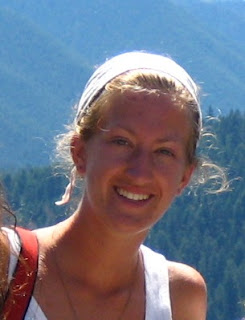First Day of PRA
Well I am perty tired right now but was just looking at my pictures of today and thought I would not delay in posting at least 1 picture. Today was really amazing and I'm so glad I had the opportunity to take part in it. Although I was thanked along with Jan for coming and told that what we are doing is great and Karibuni (all welcome) and Ahsante sana (thank you so much), I feel that they gave alot today as well. Communities that live as this one does, know alot- they are full of information that they may not even realize they carry with them. Today we visited 4 different women to gather information. They caught on pretty quickly, and I was suprised at how fast they got info onto the ground- I still a little leery of it, but I know that we can trust it, and we also will be presenting the information we have gathered to the community to open it up for discussion and agreement. It was squelchering hot today, but we were shown the utmost respect and brought chairs to sit on at each house, in the shade of a tree- like a big mango tree! It is VERY dry and ready for rain around here, and I could see that the life of these people really depend on getting good rainfall. Currently they have cassava and sweet potatoes growing for the most part, and have to walk a few miles to get water from a tap in another village. Apparently Cassava (they eat the root and sometimes the new leaves) is high in cyanide and therefore maybe should not be eaten in high quantities.

This picture is of the rainfall trend. We visited Mama Esther to get this info, who became a part of the GMHP in 1995, and her kids have 'graduated' from the program (they are over 5). We used sticks to represent rainfall, each stick going to the right is a year consecutively following 1995. Top stick= short rains, bottom stick= long rains. (each year there is a season for long and short rain, and a harvest to go with it)
This picture is of Mama Leticia Pauline.- (Okay internet not letting me post pic's anymore- this will be the next one posted) She used beans in squares drawn on the ground to rank the amount of sickness over a typical year. There were five types of sickness discussed for children: malaria, worms, diarrea, skin problems (like ringworm), and eye problems.
I found everyone to be very welcoming, and I enjoyed my day. At the end we were served boiled fish with Ugali (staple food, kind of like play doh in the sense you mold it in your hand so you can scoop sauce or veggies or fish) and cooked cabbage. We were not expecting that treatment but it was a great experience sitting there at a wooden table under a tree by a mud brick house with a grass roof...haha! We go back tomorrow for another round!


0 Comments:
Post a Comment
<< Home